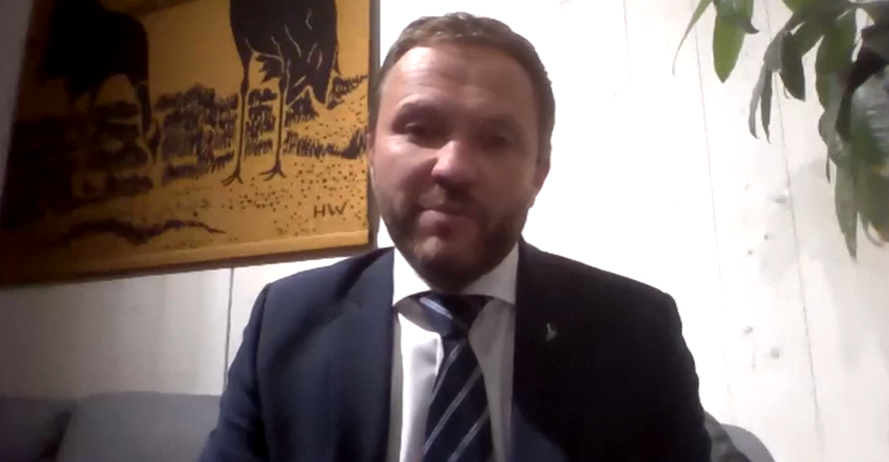Estonia Airspace Breach: Russia’s MiG-31s Intercepted by NATO
Estonia’s Provocation Accusation
Estonia says three Russian MiG-31 fighter jets entered its airspace near Vaindloo Island in the Gulf of Finland without permission, remaining inside for about 12 minutes. According to Estonian authorities, the flights were unannounced: no flight plan, transponders switched off, and no communication with air traffic control.
Under NATO’s Baltic Air Policing mission, Italian F-35s scrambled from Ämari Air Base in Estonia to intercept the aircraft. Tallinn has labelled the incursion “unprecedentedly brazen” and demanded consultations under Article 4 of the NATO treaty, which allows alliance members to raise security concerns when they feel their territory or political independence is jeopardised.

Russia Denial and Counter-Claims
Russia’s Defence Ministry denied any violation, asserting the MiG-31s flew over neutral waters in the Baltic Sea while traveling from Karelia (northwest Russia) to its exclave of Kaliningrad. The Ministry claimed the aircraft stayed more than 3 kilometres away from Vaindloo Island and followed an agreed route, adding that independent checks confirmed there was no border crossing.
Significance for NATO & Regional Tensions
This incident marks Estonia’s fourth airspace breach by Russian aircraft this year — a pattern Estonian officials say shows increasing provocations. NATO and EU leaders responded sharply, calling the breach “dangerous,” “reckless,” and affirming support for Estonia’s right to defend its airspace.
Just days earlier, more than 20 Russian drones were reported crossing into Polish airspace, forcing NATO to scramble jets and shoot some down. This, together with the recent violation in Estonia, feeds into a growing unease among Baltic and Eastern European states about what they see as Russian testing of NATO’s readiness and resolve.

NATO’s Response and Estonia’s Call for Action
- Interception: Italian F-35 fighters were deployed under NATO’s Baltic Air Policing mission to respond immediately to Estonia’s alarm.
- Diplomatic Measures: Estonia summoned the Russian chargé d’affaires to protest and requested formal NATO discussions under Article 4.
- International Reaction: European and NATO partners, including the EU’s foreign-policy high representative, condemned the incursion. Some leaders are pushing for stronger political and economic deterrents.
Wider Implications and Strategic Context
- Border security & air surveillance: The breach underscores vulnerabilities in the Baltic region and demonstrates the importance of readiness and air surveillance in NATO’s eastern flank. Estonia and its allies argue for enhanced radar, tighter rules of engagement, and faster scrambling capability.
- Diplomatic escalation: By invoking Article 4, Estonia is pushing the incident into the alliance’s diplomatic arena, potentially leading to coordinated policy responses or sanctions.
- Russian strategic signalling: Many analysts interpret the event as yet another test from Moscow to gauge NATO’s responses, challenge its eastern borders, and possibly force recalibrations of alliance posture. The choice of MiG-31s, which are high-speed, high-altitude interceptors, suggests both capability display and intent to intimidate.
Estonia’s View and Public Opinion
Estonia’s government has strongly condemned the incursion. Foreign Minister Margus Tsahkna called it “an unacceptable violation” and said such actions cannot be tolerated. Prime Minister Kristen Michal has backed this stance, calling for NATO unity. The public reaction in Estonia has been one of concern and demand for reassurance from both domestic leadership and international allies.
In broader Baltic states (Latvia, Lithuania) and Poland, there is growing pressure on NATO to bolster its deterrence and defence posture — both in terms of air defences and political solidarity. Some officials are calling for more regular air policing flights, upgraded radar networks, and policy clarity on how quickly NATO will respond in similar incidents. Al Jazeera
What This Means for NATO & For the Future
The Estonia airspace breach is not an isolated incident but part of an escalating pattern of Russian aerial and drone intrusions into NATO countries’ borders. Each such event chips away at certainty and heightens tension. Estonia’s invocation of Article 4 signals that member states are less willing to tolerate ambiguous behavior and want more concrete deterrence.
For NATO, this means:
- stronger readiness in the Baltic region (bases, aircraft, radar),
- clearer rules of engagement for intercepts,
- improved diplomacy to respond quickly and in coordination, and
- potentially, more political cost for Russia (through sanctions, diplomatic protests, etc.).
It also places pressure on the alliance to appear unified. NATO’s credibility depends not just on responding, but doing so in a way that allies and adversaries alike perceive as firm, consistent, and credible.
Conclusion
Russia’s alleged 12-minute violation of Estonian airspace near Vaindloo Island by three MiG-31 fighter jets has sparked serious regional concern. Estonia, supported by NATO and EU partners, has condemned the move, sought diplomatic redress through Article 4, and demanded stronger deterrence. Russia denies the breach, arguing the flight path was over neutral waters. But whether one accepts Moscow’s version or not, the incident adds another layer of urgency to strengthening air defence, alliance unity, and clear rules in Europe’s eastern flank.
For nations watching: this is more than a border skirmish. It’s a test of NATO’s cohesion, response capacity, and political will. If similar breaches continue without consistent pushback, the risk of miscalculation — even unintended — grows.
Subscribe to trusted news sites like USnewsSphere.com for continuous updates.





